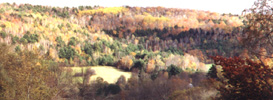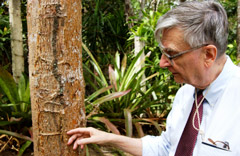Conservation of Natural Resources means we must actively protect life and its nourishing surroundings.
Edward O. Wilson, above, warns of a bleak future for wildlife, 2008.
"consider the weightiest problem now before the Nation; and the occasion for the meeting lies in the fact that the natural resources of our country are in danger of exhaustion if we permit the old wasteful methods of exploiting them longer to continue."
President Theodore Roosevelt's 1908 speech, "Conservation as a National Duty," Washington, D.C.
Creating guidelines for future actions to assure the protection of the Earth, its resources, wildlife, and human inhabitants.
“Each of us is big enough to produce our own cloud of
carbon dioxide.”
“… hotter than it has been over the last 400 million years.”
“Worried? Us?”
Granta 83, (Fall, 2003), p. 8.
What sort of criteria do we need to adopt in order for conservation of wildlife and natural resources to confront these challenges:
- Wilson’s narrowing “bottleneck” for biodiversity.
- Acidification of soils, forests, rivers and lakes.
- Climate change or doubling of the CO2 levels by 2050.
- Nutrition levels sufficient for a doubling of the population by 2070.
- Conservation versus preservation.
A diagram of a rain-shadow impact, an example of an ecological restraint on vegetation.
![]()
List some actions that you feel must be started in order for two things to happen:
- What are we doing now that needs improvement or else the future will be worse, according to the author’s than we can imagine:
- How do we get people to understand now that the impacts we have today, such as 10 to 12 acres per American to meet our needs, 200 gallons per day of water to sustain our consumption, 5 tons of carbon dioxide per US inhabitant, will linger in the air, land or water for from two to six generations to come?
# Action description targets outcomes
1.
2.
3.
![]()



